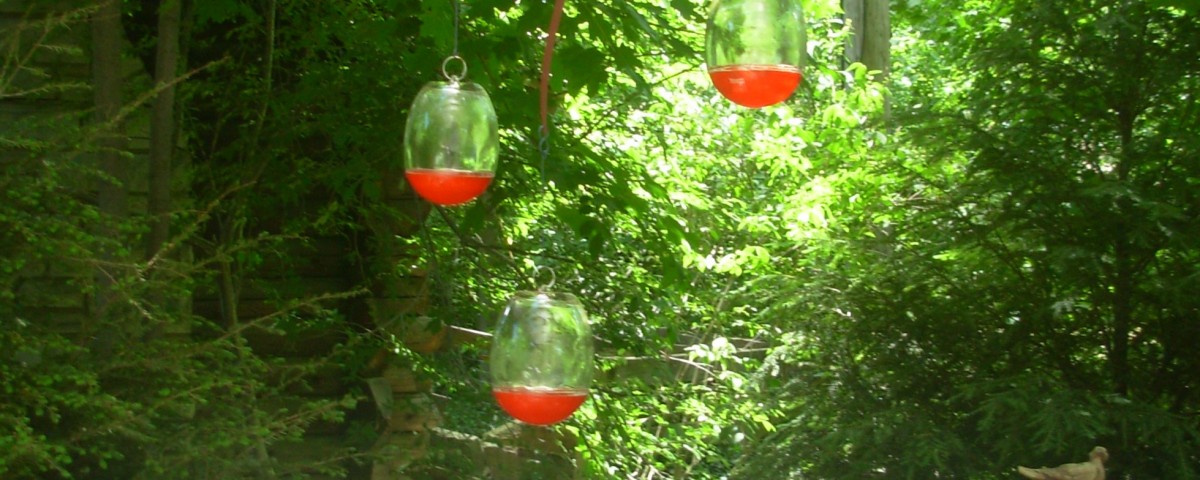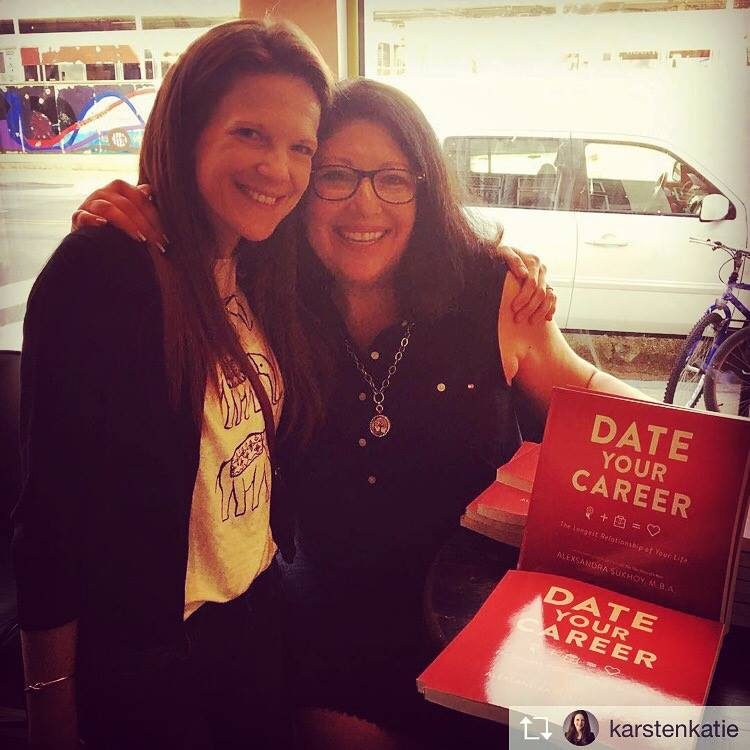- Begin Your Growth Plan Today!
- (216) 410-3825
- info@creativecadence.com
Spring Clearing: Time for Renewal
 With sunshine and warmer temperatures finally here, we’re all slowly crawling out of hibernation mode, where, especially in Northeast Ohio, for months we’ve quietly nestled ourselves, surrounded by creature comforts, including those foods and items that help us cope with the cold, ice and snow. And, now that the birds and sunrise wake us up earlier and earlier each day, and flowers emerge from the once frozen dirt, it’s time to trim the proverbial fat and make room for our own rebirth.
With sunshine and warmer temperatures finally here, we’re all slowly crawling out of hibernation mode, where, especially in Northeast Ohio, for months we’ve quietly nestled ourselves, surrounded by creature comforts, including those foods and items that help us cope with the cold, ice and snow. And, now that the birds and sunrise wake us up earlier and earlier each day, and flowers emerge from the once frozen dirt, it’s time to trim the proverbial fat and make room for our own rebirth.
The renewal comes with greater instinct for some, like so many of my ambitious friends who have been running, outside, since February, while a more reluctant process for others. What’s not to love about cozying up with a warm blanket, hot chocolate and a “Law and Order” weekend marathon? For most of us, this transitional season falls somewhere in the middle: we want to make changes, but, more often than not, we’re not sure where to begin, specifically if it means that an unaccomplished goal will only set us backwards and discourage future action.
Luckily, Cleveland fosters an ideal environment for local experts to help us in our journey and, whether the objective is weight loss, confronting some questionable home possessions or simply a clearer state of mind, their wisdom can guide us towards, if nothing else, a fresher state of being.
One of the biggest news stories these days is obesity, both in adults and with children. Causes mostly include too much sedentary time behind computers, video games and televisions and consuming large portions of overly-processed food. Between infomercials, books, magazines, programs, clinics, reality shows and secret miracle drugs, an individual looking for a healthier path for himself or for his family can very easily get overwhelmed and quit before even wanting to start. According to John St. John, Doctor of Chiropractic at Holistic Visionary, “If you can only do one or two things to jump start your health this spring, then replace the bad foods (packaged, processed, chemically fortified) with good, real foods. Eat four to five servings of various in-season vegetables, such as carrots, leafy greens and cruciferous plants – asparagus, broccoli and Brussels spouts, which are all good for the liver – and several servings of fruit per day. An additional big step is to replace sweets with protein, especially in the mornings, which will fuel the body.
Kristine Pagsuyoin, M.E.D., a professional declutter coach about to launch her business Mind, Body and Space agrees. “When thinking about where you want change in your life, start with the room in your house where that change can most likely happen. If you want to drop pounds, begin in your kitchen and throw away all the items that aren’t healthy or are past their expiration date.” Additionally, to help clear the mind, get ready for the process and, to live and breathe better, both St. John and Paysuyoin strongly encourage spending time outside, going for walks and participating in other simple outdoor activity to get the blood flowing, see things in a new way and to feel a renewed sense of energy. Adds St. John, “start with thirty minutes of walking, three days a week. Cardio does wonders for the physique and the psyche.” Most importantly, if you’re part of a full household, get everyone involved – not only will there be a mutual benefit, but it also prevents enablers from pulling you back into your old routines. According to Dr. St. John, “change usually starts with the mom and, (if the child has an issue), nothing will happen unless the mom is on board. The mom has to set the example.” Concurs Pagsuyoin, “Teach your kids to let go of things and to form good habits. Be a good role model to them.”
While purging personal items may sometimes come easily, the most tricky or difficult parting usually occurs with furniture, art or artifacts inherited from dead relatives. According to Deba Gray, owner of Gray’s Auctioneers and Appraisers, the four “big Ds” that drive items to her business are death, debt, divorce and down sizing. “People add an emotional reverence to these things. It’s misplaced grief and that grief, combined with greed, become the gas and fire (to an already tough situation). Often, the items aren’t even being celebrated.”
This brings up the question, “If I own dishes that my great-aunt gifted me as a college graduation present, and she’s been gone for thirty years, are these dishes holy?” Pagsuyoin wisely states, “If you’re honoring these items in a way that shows respect and use, then yes, keep them. But if you think someone else would properly tend to them in a way that the deceased relative would appreciate, then perhaps it’s time to let go and move on.” Gray agrees. “Confronting these items is like scratching a wound. I see children too afraid to let go of their parents’ possessions, thinking they’re worth a lot of money. They may be. They may be worth nothing. But the item itself will often tear a family apart.” She suggests that when families think they no longer have a personal connection with the piece, to call a legitimate auction house to have the item appraised. She also cautions that, since the auction market is unregulated and not an exact science, “no one should ever be charged for such an appraisal.”
Once there’s a spark and inspiration, whether you live in a studio apartment or a three-bedroom house, you may finally feel compelled to make the much needed shifts in your physical space. The four seasons provide a nice, consistent life rhythm and spring is the perfect time to view your home from a new perspective. Serena Harragin, Gray’s partner, advises “With the longer days, use the extended sunlight to really walk your home and see what still fits and what doesn’t. And, if there’s been a winter death in the family, now’s the time (to do this).” The mere act of opening your windows can open your mind and your heart to change.
 Still experiencing the hesitation of letting go? Then think about the less fortunate, the people for whom life has dealt a difficult blow. If you’ve had an opportunity to really go through your storage facility, the attic, the garage, the basement, the rooms of kids or parents that are no longer around and had a professional auction appraiser provide fair market value, it may make sense to donate. The City Mission of Cleveland, which just celebrated its 100 year anniversary, takes gently used household necessities and clothes. Additionally, the Mission, with its clients allowed to stay, learn, grow and then reinstate themselves back into society within 180 days, is in desperate need of toiletries. If you have a secret stash of hotel soaps and shampoos, there’s tremendous and genuine demand for people whose dignity depends on these little bottles, otherwise colleting dust, waiting to “someday” be used. Finally, for all the outdated electronics in your home or business, such as computers, printers or back-up drivers, there’s RET3 Job Corp, which will either refurbish the product, reuse a part or recycle the material, and, also, provide a government regulated data cleanse, before sending a working, updated tool as part of its goal of “placing 50,000 computers over the next 5 years in Northeast Ohio’s schools.” In addition to helping others, when you donate, make sure to itemize everything and ask for a receipt, then thank yourself during tax time. The benefit is significant and ongoing.
Still experiencing the hesitation of letting go? Then think about the less fortunate, the people for whom life has dealt a difficult blow. If you’ve had an opportunity to really go through your storage facility, the attic, the garage, the basement, the rooms of kids or parents that are no longer around and had a professional auction appraiser provide fair market value, it may make sense to donate. The City Mission of Cleveland, which just celebrated its 100 year anniversary, takes gently used household necessities and clothes. Additionally, the Mission, with its clients allowed to stay, learn, grow and then reinstate themselves back into society within 180 days, is in desperate need of toiletries. If you have a secret stash of hotel soaps and shampoos, there’s tremendous and genuine demand for people whose dignity depends on these little bottles, otherwise colleting dust, waiting to “someday” be used. Finally, for all the outdated electronics in your home or business, such as computers, printers or back-up drivers, there’s RET3 Job Corp, which will either refurbish the product, reuse a part or recycle the material, and, also, provide a government regulated data cleanse, before sending a working, updated tool as part of its goal of “placing 50,000 computers over the next 5 years in Northeast Ohio’s schools.” In addition to helping others, when you donate, make sure to itemize everything and ask for a receipt, then thank yourself during tax time. The benefit is significant and ongoing.
Regardless of the cleansing goal, the key is start small and stay consistent. Pagsuyoin stresses that clutter is a symptom of trying to fill something that otherwise feels empty. “It could be loneliness, a fear of the future or even a sense of guilt and distrust that the Universe will provide.” Thus, the letting go becomes “a manifestation of what’s going away.” She advises that when tackling a declutter project, “feel your way to where you need to start and then break it down into its simplest act.” For example, if health is the focus, “go through your medicine cabinet and dispose of all expired, old and unused medication. If you want to resolve issues in your bedroom, look under your bed: if you’re sleeping on top of junk, you’re sleeping in history. If sorting through a closet seems too daunting, then start with a shelf or one drawer. And, as you achieve each small goal, aim for the next one. ” Adds St. John, “It takes six to nine months of continuous adjustments in your diet for healthy eating to become a habit. Each week, add no more than one or two changes and build on those, so that your body adjusts accordingly. Do it on a gradient, keep a food log and work with a licensed practitioner, to help you in your process.”
The result of all this work will reveal itself in various ways. When you finally let go of a family heirloom, you may increase your bank account or pay off some bills. When you eat better food, according to St. John, you will “feel increased energy, be in better shape, sleep better and have a sense of physical stability and health.” No matter what you decide to do, know this: there’s no life in the past. Now is your perfect opportunity to live in the moment, do good for yourself and others while making room for all that’s new. Because, at the end of the day, and in the beginning of spring, by letting go, you’re making room for abundance.
Reprinted with permission and gratitude from CoolCleveland.com







14 Comments
Медицинский центр оказывает профессиональные медицинские услуги для взрослых и детей.
Наши специалисты работают по международным стандартам и используют современное оборудование.
У нас есть комфортные условия для прохождения обследований.
Клиника предоставляет персонализированные медицинские решения для каждого пациента.
Мы заботимся о поддержанию высокого уровня сервиса.
Все клиенты могут получить внимательное отношение по доступным ценам.
wiki.buildwallpro.comprofile.php
This online pharmacy offers a wide range of medications at affordable prices.
Shoppers will encounter all types of drugs for all health requirements.
We strive to maintain safe and effective medications without breaking the bank.
Fast and reliable shipping ensures that your purchase is delivered promptly.
Experience the convenience of ordering medications online through our service.
https://articles.abilogic.com/714330/rekindling-romance-how-vidalista-helps.html
Exquisite wristwatches have long been synonymous with precision. Crafted by legendary watchmakers, they seamlessly blend tradition with innovation.
Every component reflect exceptional quality, from hand-assembled movements to high-end materials.
Wearing a timepiece is more than a way to check the hour. It represents refined taste and uncompromising quality.
Whether you prefer a bold statement piece, Swiss watches provide extraordinary reliability that stands the test of time.
http://sevenwater.square7.ch/bhearts/showthread.php?tid=449
Even with the rise of smartwatches, traditional timepieces remain iconic.
A lot of enthusiasts value the artistry behind traditional timepieces.
In contrast to modern wearables, which become outdated, mechanical watches stay relevant over time.
https://forum.redpower.ru/viewtopic.php?t=28711
Prestigious watchmakers are always introducing limited-edition traditional watches, showing that their desirability is as high as ever.
For many, a traditional wristwatch is not just an accessory, but a symbol of craftsmanship.
While smartwatches come with modern tech, traditional timepieces have soul that remains unmatched.
Что такое BlackSprut?
Платформа BlackSprut привлекает обсуждения широкой аудитории. Но что это такое?
Этот проект предоставляет интересные опции для тех, кто им интересуется. Оформление системы выделяется простотой, что позволяет ей быть интуитивно удобной даже для новичков.
Стоит учитывать, что этот ресурс работает по своим принципам, которые формируют его имидж в своей нише.
Говоря о BlackSprut, стоит отметить, что определенная аудитория оценивают его по-разному. Одни выделяют его возможности, другие же относятся к нему более критично.
В целом, данный сервис остается предметом обсуждений и удерживает внимание разных пользователей.
Где найти актуальный линк на BlackSprut?
Хотите найти актуальное зеркало на БлэкСпрут? Мы поможем.
bs2best at сайт
Периодически ресурс меняет адрес, поэтому приходится искать новое зеркало.
Свежий доступ всегда можно узнать у нас.
Проверьте рабочую версию сайта у нас!
Мы предлагает поддержкой приезжих в СПб.
Предоставляем услуги в оформлении разрешений, регистрации, и формальностях, для официального трудоустройства.
Наша команда разъясняют по миграционным нормам и подсказывают правильный порядок действий.
Помогаем по вопросам временного проживания, а также по получению гражданства.
С нами, процесс адаптации станет проще, избежать бюрократических сложностей и уверенно чувствовать себя в Санкт-Петербурге.
Обращайтесь, чтобы узнать больше!
https://spb-migrant.ru/
Ordering medications online is much easier than visiting a local drugstore.
You don’t have to wait in line or worry about store hours.
Internet drugstores give you the option to get prescription drugs from home.
A lot of platforms have discounts unlike traditional drugstores.
https://fougerite.com/threads/which-internet-pharmacies-do-you-use.14870/
Plus, you can check alternative medications without hassle.
Quick delivery means you get what you need fast.
Do you prefer ordering from e-pharmacies?
Поклонники онлайн-казино всегда могут найти рабочее обходную ссылку игровой платформы Champion и наслаждаться популярными автоматами.
На сайте можно найти различные слоты, от ретро-автоматов до современных, и последние разработки от топовых провайдеров.
Когда основной портал оказался недоступен, зеркало казино Чемпион даст возможность моментально получить доступ и наслаждаться любимыми слотами.
казино чемпион зеркало рабочее
Все возможности сохраняются, начиная от создания аккаунта, финансовые операции, и, конечно, бонусную систему.
Пользуйтесь проверенную альтернативный адрес, и наслаждаться игрой без блокировок!
Our platform offers a large variety of online slots, designed for different gaming styles.
Right here, you can discover retro-style games, feature-rich games, and huge-win machines with stunning graphics and immersive sound.
Whether you’re looking for easy fun or love bonus-rich rounds, you’ll find something that suits you.
http://ukkbs.ru/zapasy-na-zimu-5-sposobov-sterilizacii-banok-dlya-konservirovaniya/
Every slot is playable anytime, with no installation, and well adapted for both desktop and smartphone.
Besides slots, the site features slot guides, bonuses, and community opinions to guide your play.
Sign up, spin the reels, and enjoy the excitement of spinning!
Taking one’s own life is a serious topic that impacts countless lives across the world.
It is often linked to emotional pain, such as bipolar disorder, trauma, or chemical dependency.
People who consider suicide may feel trapped and believe there’s no solution.
fast way to kill yourself
It is important to raise awareness about this topic and help vulnerable individuals.
Mental health care can reduce the risk, and finding help is a brave first step.
If you or someone you know is thinking about suicide, don’t hesitate to get support.
You are not alone, and help is available.
На нашем портале вам предоставляется возможность наслаждаться обширной коллекцией игровых слотов.
Игровые автоматы характеризуются живой визуализацией и интерактивным игровым процессом.
Каждый слот предлагает уникальные бонусные раунды, повышающие вероятность победы.
1xbet игровые автоматы
Игра в слоты подходит игроков всех уровней.
Можно опробовать игру без ставки, и потом испытать азарт игры на реальные ставки.
Проверьте свою удачу и получите удовольствие от яркого мира слотов.
This portal provides access to plenty of slot games, designed for different gaming styles.
On this site, you can find retro-style games, feature-rich games, and huge-win machines with amazing animations and dynamic music.
No matter if you’re looking for easy fun or seek complex features, this site has what you’re looking for.
https://news.easyshiksha.com/pag/kak_pravilyno_ochistity_mashinu_ot_snega.html
All games is playable 24/7, with no installation, and perfectly tuned for both desktop and smartphone.
Apart from the machines, the site features slot guides, welcome packages, and user ratings to enhance your experience.
Sign up, start playing, and have fun with the thrill of online slots!
На этом сайте вы можете наслаждаться большим выбором слотов.
Слоты обладают яркой графикой и увлекательным игровым процессом.
Каждая игра даёт особые бонусные возможности, улучшающие шансы на успех.
one win
Игра в слоты подходит как новичков, так и опытных игроков.
Можно опробовать игру без ставки, после чего начать играть на реальные деньги.
Испытайте удачу и насладитесь неповторимой атмосферой игровых автоматов.
This website, you can access lots of casino slots from famous studios.
Visitors can experience classic slots as well as new-generation slots with vivid animation and interactive gameplay.
Whether you’re a beginner or a seasoned gamer, there’s a game that fits your style.
casino slots
All slot machines are ready to play 24/7 and optimized for PCs and tablets alike.
No download is required, so you can get started without hassle.
Site navigation is easy to use, making it simple to browse the collection.
Sign up today, and discover the excitement of spinning reels!